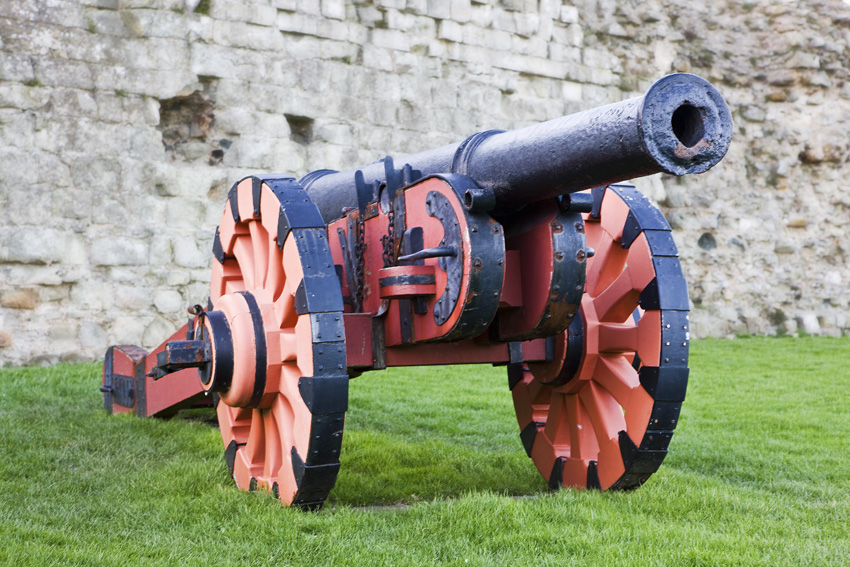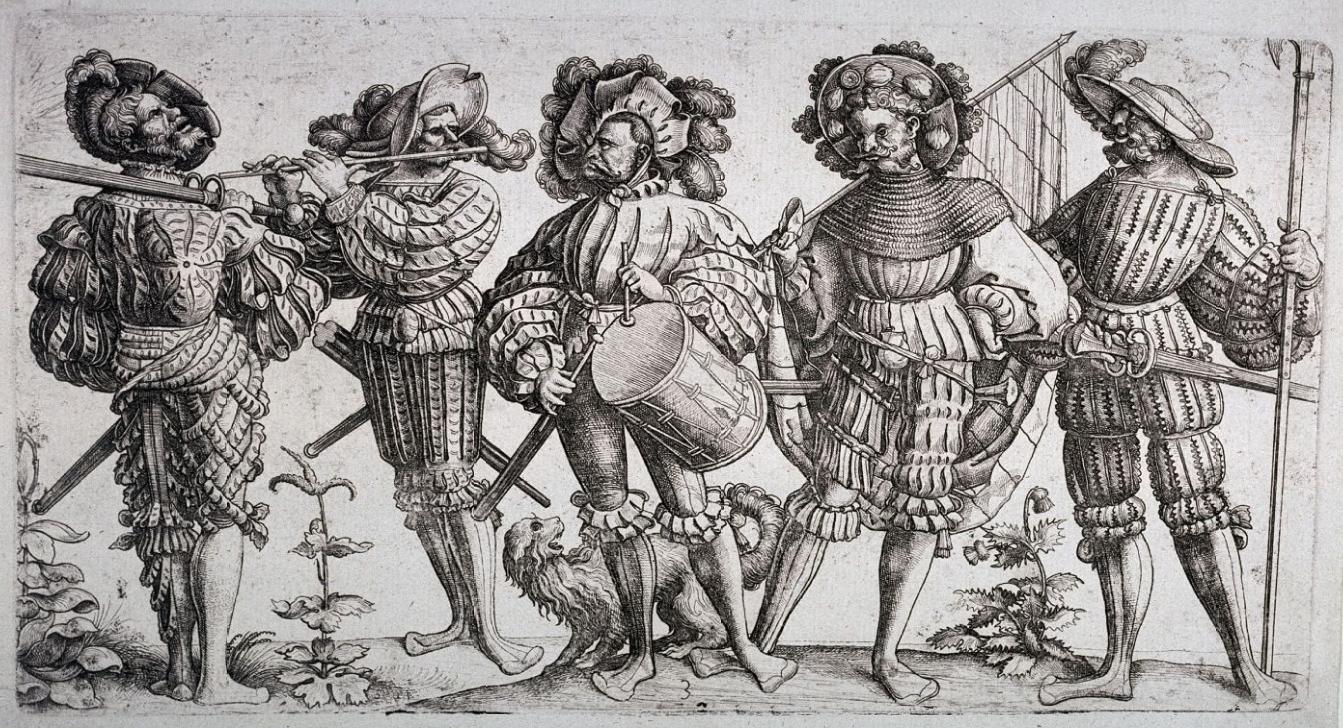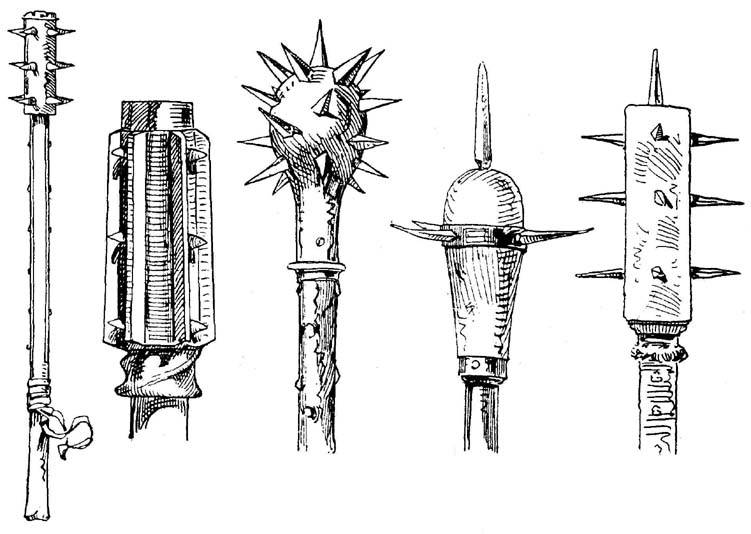|
Battle Of Pfeddersheim
The Battle of Pfeddersheim (german: Schlacht bei Pfeddersheim) was a battle during the German Peasants' War that took place in June 1525 near Pfeddersheim. The peasants of the Palatinate region had previously joined the uprising in southwest Germany against high taxes and attacked, plundered, and devastated the estates of the nobility and the monasteries. Causes The Battle of Pfeddersheim was part of the Palatine Peasants' War of 1525. The unrest amongst the peasants and townsfolk in and around Worms began before 29 April 1525 and reached its zenith in May that year. They demanded that the town authorities comply with 13 articles and make concessions within four days. These articles were related to three areas: first, in the religious sphere, they demanded a clear and unbiased preaching of the Gospel and the free election of priests and preachers by members of the community. Second, in the economic sphere and where applicable, they demanded that interest, pensions and rent ... [...More Info...] [...Related Items...] OR: [Wikipedia] [Google] [Baidu] |
German Peasants' War
The German Peasants' War, Great Peasants' War or Great Peasants' Revolt (german: Deutscher Bauernkrieg) was a widespread popular revolt in some German-speaking areas in Central Europe from 1524 to 1525. It failed because of intense opposition from the aristocracy, who slaughtered up to 100,000 of the 300,000 poorly armed peasants and farmers. The survivors were fined and achieved few, if any, of their goals. Like the preceding Bundschuh movement and the Hussite Wars, the war consisted of a series of both economic and religious revolts in which peasants and farmers, often supported by Anabaptist clergy, took the lead. The German Peasants' War was Europe's largest and most widespread popular uprising before the French Revolution of 1789. The fighting was at its height in the middle of 1525. The war began with separate insurrections, beginning in the southwestern part of what is now Germany and Alsace, and spread in subsequent insurrections to the central and eastern areas of Ge ... [...More Info...] [...Related Items...] OR: [Wikipedia] [Google] [Baidu] |
Clergy
Clergy are formal leaders within established religions. Their roles and functions vary in different religious traditions, but usually involve presiding over specific rituals and teaching their religion's doctrines and practices. Some of the terms used for individual clergy are clergyman, clergywoman, clergyperson, churchman, and cleric, while clerk in holy orders has a long history but is rarely used. In Christianity, the specific names and roles of the clergy vary by denomination and there is a wide range of formal and informal clergy positions, including deacons, elders, priests, bishops, preachers, pastors, presbyters, ministers, and the pope. In Islam, a religious leader is often known formally or informally as an imam, caliph, qadi, mufti, mullah, muezzin, or ayatollah. In the Jewish tradition, a religious leader is often a rabbi (teacher) or hazzan (cantor). Etymology The word ''cleric'' comes from the ecclesiastical Latin ''Clericus'', for those belonging ... [...More Info...] [...Related Items...] OR: [Wikipedia] [Google] [Baidu] |
Cannon
A cannon is a large- caliber gun classified as a type of artillery, which usually launches a projectile using explosive chemical propellant. Gunpowder ("black powder") was the primary propellant before the invention of smokeless powder during the late 19th century. Cannons vary in gauge, effective range, mobility, rate of fire, angle of fire and firepower; different forms of cannon combine and balance these attributes in varying degrees, depending on their intended use on the battlefield. A cannon is a type of heavy artillery weapon. The word ''cannon'' is derived from several languages, in which the original definition can usually be translated as ''tube'', ''cane'', or ''reed''. In the modern era, the term ''cannon'' has fallen into decline, replaced by ''guns'' or ''artillery'', if not a more specific term such as howitzer or mortar, except for high-caliber automatic weapons firing bigger rounds than machine guns, called autocannons. The earliest known depict ... [...More Info...] [...Related Items...] OR: [Wikipedia] [Google] [Baidu] |
Infantry
Infantry is a military specialization which engages in ground combat on foot. Infantry generally consists of light infantry, mountain infantry, motorized infantry & mechanized infantry, airborne infantry, air assault infantry, and marine infantry. Although disused in modern times, heavy infantry also commonly made up the bulk of many historic armies. Infantry, cavalry, and artillery have traditionally made up the core of the combat arms professions of various armies, with the infantry almost always comprising the largest portion of these forces. Etymology and terminology In English, use of the term ''infantry'' began about the 1570s, describing soldiers who march and fight on foot. The word derives from Middle French ''infanterie'', from older Italian (also Spanish) ''infanteria'' (foot soldiers too inexperienced for cavalry), from Latin '' īnfāns'' (without speech, newborn, foolish), from which English also gets '' infant''. The individual-soldier term ''infantry ... [...More Info...] [...Related Items...] OR: [Wikipedia] [Google] [Baidu] |
Artillery
Artillery is a class of heavy military ranged weapons that launch munitions far beyond the range and power of infantry firearms. Early artillery development focused on the ability to breach defensive walls and fortifications during sieges, and led to heavy, fairly immobile siege engines. As technology improved, lighter, more mobile field artillery cannons developed for battlefield use. This development continues today; modern self-propelled artillery vehicles are highly mobile weapons of great versatility generally providing the largest share of an army's total firepower. Originally, the word "artillery" referred to any group of soldiers primarily armed with some form of manufactured weapon or armor. Since the introduction of gunpowder and cannon, "artillery" has largely meant cannons, and in contemporary usage, usually refers to shell-firing guns, howitzers, and mortars (collectively called ''barrel artillery'', ''cannon artillery'', ''gun artillery'', or - a layman t ... [...More Info...] [...Related Items...] OR: [Wikipedia] [Google] [Baidu] |
Falconet (cannon)
The falconet was a light cannon developed in the late 15th century that fired a smaller shot than the similar falcon. During the Middle Ages guns were decorated with engravings of animals, such as reptiles, birds or mythical beasts depending on their size. For example, a culverin would often feature snakes, as the handles on the early cannons were often decorated to resemble serpents. The falconet fired small yet lethal shot of similar weight and size to a bird of prey, and so was decorated with a falcon. Similarly, the musket was associated with the sparrowhawk.Its barrel was approximately long, had a calibre of and weighed . The falconet used of black powder to fire a round shot at a maximum range of approximately . They could also be used to fire grapeshot. The falconet resembled an oversized matchlock musket with two wheels attached to improve mobility. In 1620s Germany a breechloading version was invented, seeing action in the Thirty Years War. Many falconets were in u ... [...More Info...] [...Related Items...] OR: [Wikipedia] [Google] [Baidu] |
Demi-culverin
The demi-culverin was a medium cannon similar to but slightly larger than a saker and smaller than a regular culverin developed in the late 16th century. Barrels of demi-culverins were typically about long, had a calibre of and could weigh up to . It required of black powder to fire an round shot A round shot (also called solid shot or simply ball) is a solid spherical projectile without explosive charge, launched from a gun. Its diameter is slightly less than the bore of the barrel from which it is shot. A round shot fired from a lar ... (though there were heavier variants firing or round shot). The demi-culverin had an effective range of . Demi-culverins were valued by generals for their range, accuracy and effectiveness. They were often used in sieges for wall and building demolition. References Cannon {{artillery-stub ... [...More Info...] [...Related Items...] OR: [Wikipedia] [Google] [Baidu] |
Culverin
A culverin was initially an ancestor of the hand-held arquebus, but later was used to describe a type of medieval and Renaissance cannon. The term is derived from the French "''couleuvrine''" (from ''couleuvre'' "grass snake", following the Latin ''colubrinus'' "of the nature of a snake".) From its origin as a hand-held weapon it was adapted for use as artillery by the French in the 15th century, and for naval use by the English in the 16th century. The culverin as an artillery piece had a long smoothbore barrel with a relatively long range and flat trajectory, using solid round shot projectiles with high muzzle velocity. Hand culverins The hand culverin consisted of a simple smoothbore metal tube, closed at one end except for a small touch hole designed to allow ignition of the gunpowder. The tube was attached to a wood or metal extension which could be held under the arm. It was loaded with gunpowder and lead bullets and fired by inserting a burning slow match into the ... [...More Info...] [...Related Items...] OR: [Wikipedia] [Google] [Baidu] |
Kartouwe
A kartouwe (plural: ''kartouwen'') is a siege gun used in European warfare during the 16th and 17th centuries.Meyers (1907), p. 682; Brockhaus (1911), p. 943 The name ''kartouwe'' is of Dutch origin, a corruption of Latin ''quartana''Meyers (1907), p. 682; Brockhaus (1911), p. 943; Adelung (1796), p. 1506 (quarter cannon).Llewellyn (1936), p. 24 In the Holy Roman Empire the gun was called Kartaune in German or cartouwe in contemporary Latin usage,Adelung (1796), p. 1506 in the Swedish Empire Kartow, spelling variants include kartouw, kartouve,Peterson (2007), p.95 cartow, cartaun, courtaun, and others. Characteristics Kartouwen were developed from bombards. A kartouwe has a caliber of , weighs about , and is designed to fire cannonballs weighing up to .Kasekamp (1990); Peterson (2007), p. 95 As a minimum, twenty horses or oxen were needed to move a kartouwe. In addition to "whole" ("''hele''") kartouwen, there were also double,Kasekamp (1990) half ("''halve''")Kasekamp (1990) ... [...More Info...] [...Related Items...] OR: [Wikipedia] [Google] [Baidu] |
Landsknecht
The (singular: , ), also rendered as Landsknechts or Lansquenets, were Germanic mercenaries used in pike and shot formations during the early modern period. Consisting predominantly of pikemen and supporting foot soldiers, their front line was formed by ''Doppelsöldner'' ("double-pay men") renowned for their use of ''Zweihänder'' and arquebus. Originally organized by Emperor Maximilian I and Georg von Frundsberg, they formed the bulk of the Holy Roman Empire's Imperial Army from the late 1400s to the early 1600s, fighting in the Habsburg-Valois wars, the Habsburg-Ottoman wars, and the European wars of religion. Although prone to mutiny if unpaid and divided within their ranks between Catholics and Lutherans, the ''Landsknechte'' were well-armed, experienced, and fierce warriors. In addition, they were recruitable in large numbers throughout Germany and Austria by the Holy Roman Emperor and thus guaranteed both quantity and quality to the Imperial military for a century a ... [...More Info...] [...Related Items...] OR: [Wikipedia] [Google] [Baidu] |
Morning Star (weapon)
A morning star (german: Morgenstern) is any of several medieval club-like weapons consisting of a shaft with an attached ball adorned with one or more spikes. Each used, to varying degrees, a combination of blunt-force and puncture attack to kill or wound the enemy. History The morning star first came into widespread use around the beginning of the fourteenth century, particularly in Germany where it was known as ''Morgenstern''. The term is often confused with the military flail (''fléau d'armes'' in French and ''Kriegsflegel'' in German), which typically consists of a wooden shaft joined by a length of chain to one or more iron-shod wooden bars (heavy sword pommels have also been used as weights). However, there are few depictions of such a ball-and-chain flail from the period, so the weapon of this type appears to have been uncommon. Design The morning star is a medieval weapon consisting of a spiked ball mounted on a shaft, resembling a mace, usually with a long spike ... [...More Info...] [...Related Items...] OR: [Wikipedia] [Google] [Baidu] |
Lance
A lance is a spear designed to be used by a mounted warrior or cavalry soldier ( lancer). In ancient and medieval warfare, it evolved into the leading weapon in cavalry charges, and was unsuited for throwing or for repeated thrusting, unlike similar weapons of the javelin and pike family typically used by infantry. Lances were often equipped with a vamplate, a small circular plate to prevent the hand sliding up the shaft upon impact, and beginning in the late 14th century were used in conjunction with a lance rest attached to the breastplate. Though best known as a military and sporting weapon carried by European knights and men-at-arms, the use of lances was widespread throughout Asia, the Middle East, and North Africa wherever suitable mounts were available. Lancers of the medieval period also carried secondary weapons such as swords, battle axes, war hammers, maces and daggers for use in hand-to-hand combat, since the lance was often a one-use-per-engagement weapon; assumi ... [...More Info...] [...Related Items...] OR: [Wikipedia] [Google] [Baidu] |









